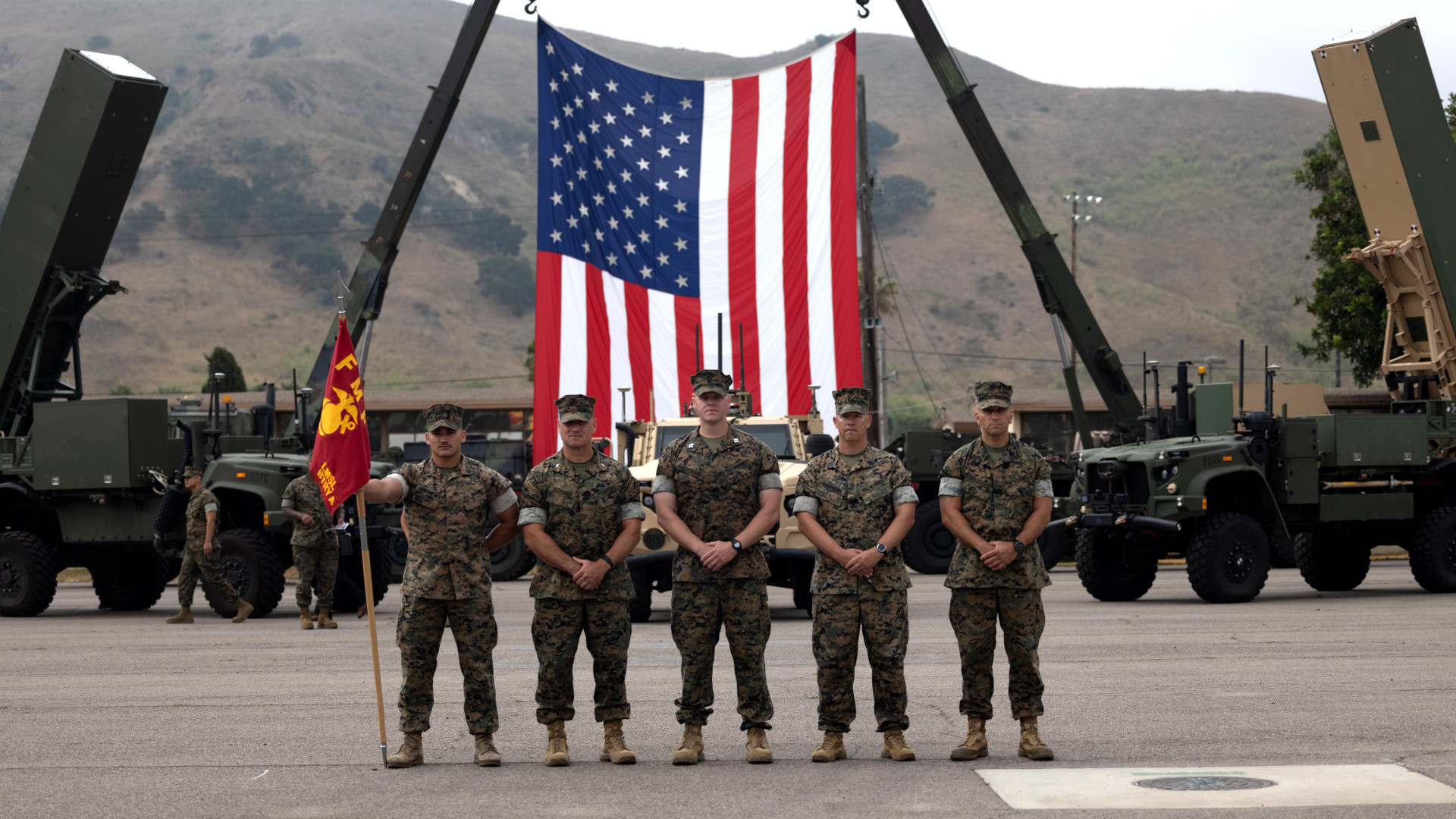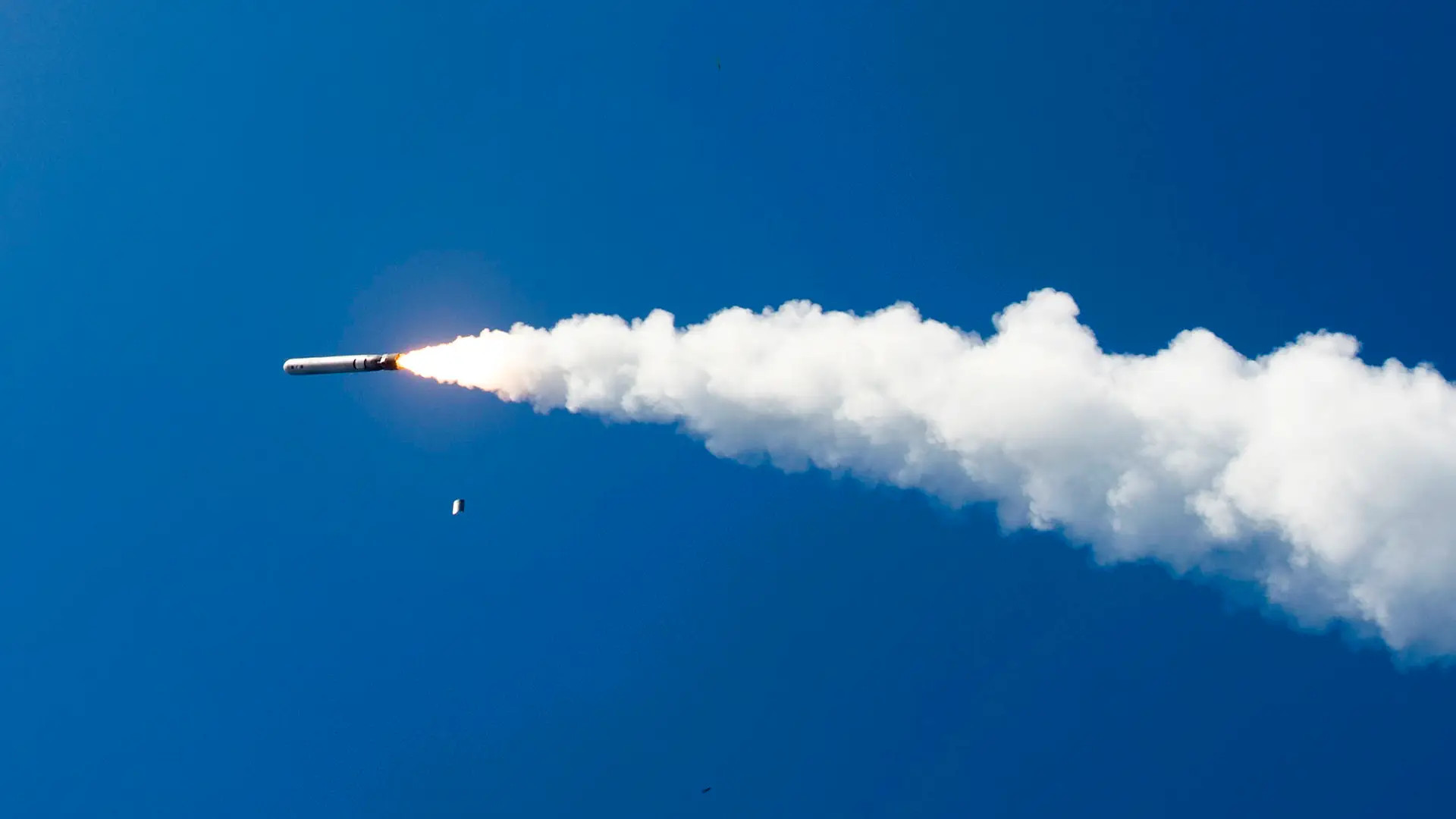The U.S. Marine Corps offered a glimpse of its new 4×4 Tomahawk launch vehicle firing one of these cruise missiles at the recently concluded annual Modern Day Marine exposition this week. The Marines are planning to have their first four operational Tomahawk launchers fielded by the end of this year and are looking to expand production of the complete weapon system in the next fiscal cycle.
Marine Col. Bradley Sams, the service’s Program Manager for Ground Weapon Systems, included the picture of the Tomahawk launcher in action, seen at the top of this story, in a presentation at Modern Day Marine on Wednesday. The Marine Corps released the first images of these launch vehicles, on static display, last year. The service also previously disclosed that live-fire testing of the Tomahawk launch vehicle had occurred.

The Tomahawk launch vehicle is an uncrewed derivative of the 4×4 Joint Light Tactical Vehicle (JLTV), known as the Remotely Operated Ground Unit for Expeditionary Fires (ROGUE-Fires), which can be loaded with a single Tomahawk inside a standardized launch canister at a time. The Tomahawk launcher is part of a complete Long Range Fires (LRF) weapon system that also includes a “Leader Vehicle, LRF Command and Control System (C2), and LRF Resupply and Reload System (R2),” according to the Marines. The service plans to acquire a mix of Maritime Strike Tomahawk (MST) missiles optimized for the anti-ship role and standard land attack variants (which also have a latent anti-ship capability) for use with the LRF system.
LRF is also somewhat confusingly the name of the larger portfolio of current and future planned Marine long-range ground-based strike weapons. This also includes another version of ROGUE-Fires that can be armed with up to two Naval Strike Missile (NSM) anti-ship cruise missiles that is part of a separate weapon system called the Navy/Marine Corps Expeditionary Ship Interdiction System (NMESIS).

“We’re looking at the production contract for Long-Range Fires. We’re looking to build capacity on their program through a production contract award in FY25 [Fiscal Year 2025],” Col. Sams said on Wednesday. “Specifically, we’re looking to produce the main components of the LRF system, which are the Tomahawk launch unit, the command and control unit, and the resupply and reloader system.”
The first Marine Long Range Missile (LMSL) unit set to be equipped with the LRF weapon system, Battery A, 11th Marines at Camp Pendleton in California, has already been formally stood up, as The War Zone was first to report.
“The current plan is to establish three 16-launcher, long range missile (LMSL) batteries to form one LMSL battalion capable of deploying one battery at a time by 2030,” Marine Gen. David Berger, then Commandant of the Marine Corps, explained in written testimony submitted ahead of a hearing before the Senate Appropriations Committee in March 2023. “The first four operational launchers are scheduled to be fielded during 4QFY24.”
The fourth quarter of Fiscal Year 2024 ends on September 30 of this year. There are no indications this fielded plan has changed since then, but it is unclear when Battery A, 11th Marines may formally reach an initial operational capability with the LRF weapon system.
Regardless, the Marine Corps is clearly moving ahead with its plans to field this new ground-launched cruise missile capability. The LRF weapon system will allow Marines to hold targets on land and at sea at risk within a bubble extending roughly 1,000 miles in any direction from where it is deployed.

LRF and NMESIS are among a host of capabilities the Marine Corps is working to acquire to support new expeditionary and distributed concepts of operations. Those concepts are heavily centered on a potential island-hopping scenario within the context of a broader high-end fight with China in the Pacific.
The Marines are not alone in pursuing new ground-based strike capabilities as part of preparing for a possible future major conflict in the Pacific region. The U.S. Army and U.S. Navy are both in the process of acquiring and fielding new trailer-based missile launch systems capable of firing both Tomahawks and multi-purpose SM-6 missiles. The Army just recently sent one of its new ground-based Typhon missile systems to take part in an exercise in the Philippines. This is also a significant show of force right in China’s backyard that offers a glimpse of how Typhon, as well as the Marine’s LRF weapon system and the Navy’s Mk 70 Expeditionary Launcher, are expected to be forward-deployed in the future as you can read more about here.

As it stands now, the Marines are set to have a full battalion equipped with the Tomahawk-launching LRF weapon system, which we have now seen a glimpse of in action, by the end of the decade.
Contact the author: joe@twz.com
